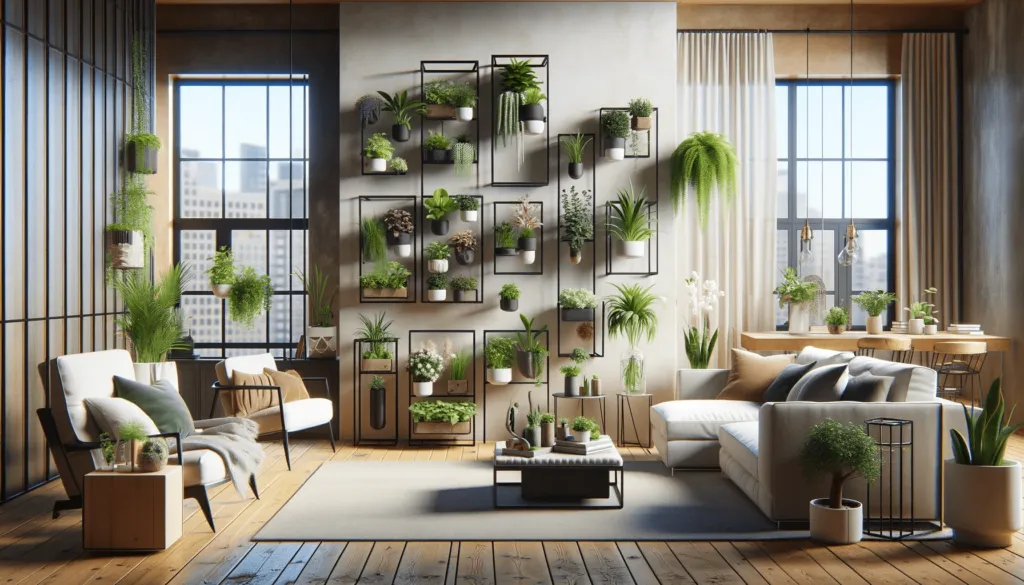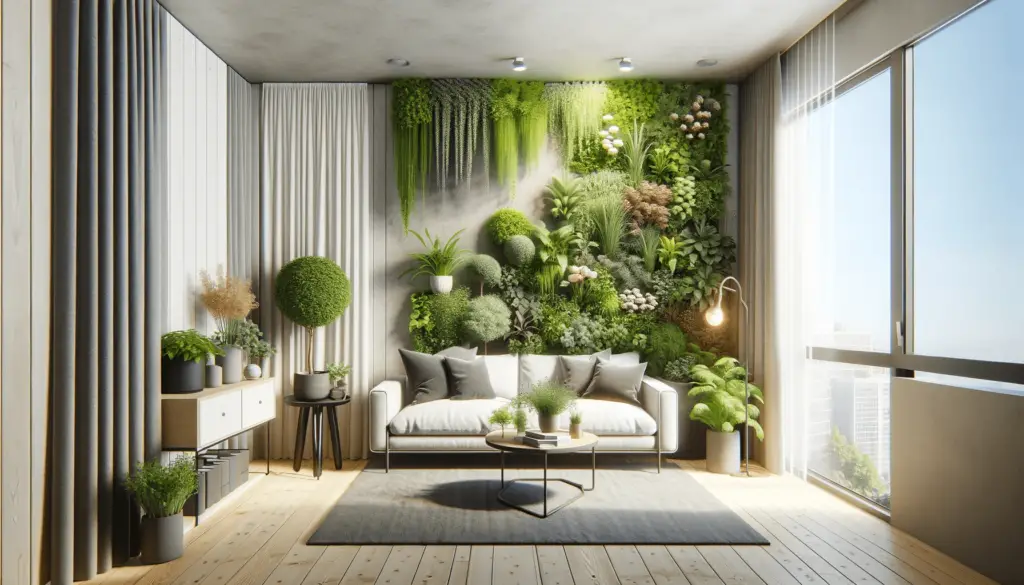Vertical gardens are a great way to maximize your gardening space and add some greenery to your home or office. However, maintaining a vertical garden can be a bit tricky, especially if you’re new to gardening. In this article, we will share some vertical garden upkeep tips to help you keep your garden healthy and thriving.
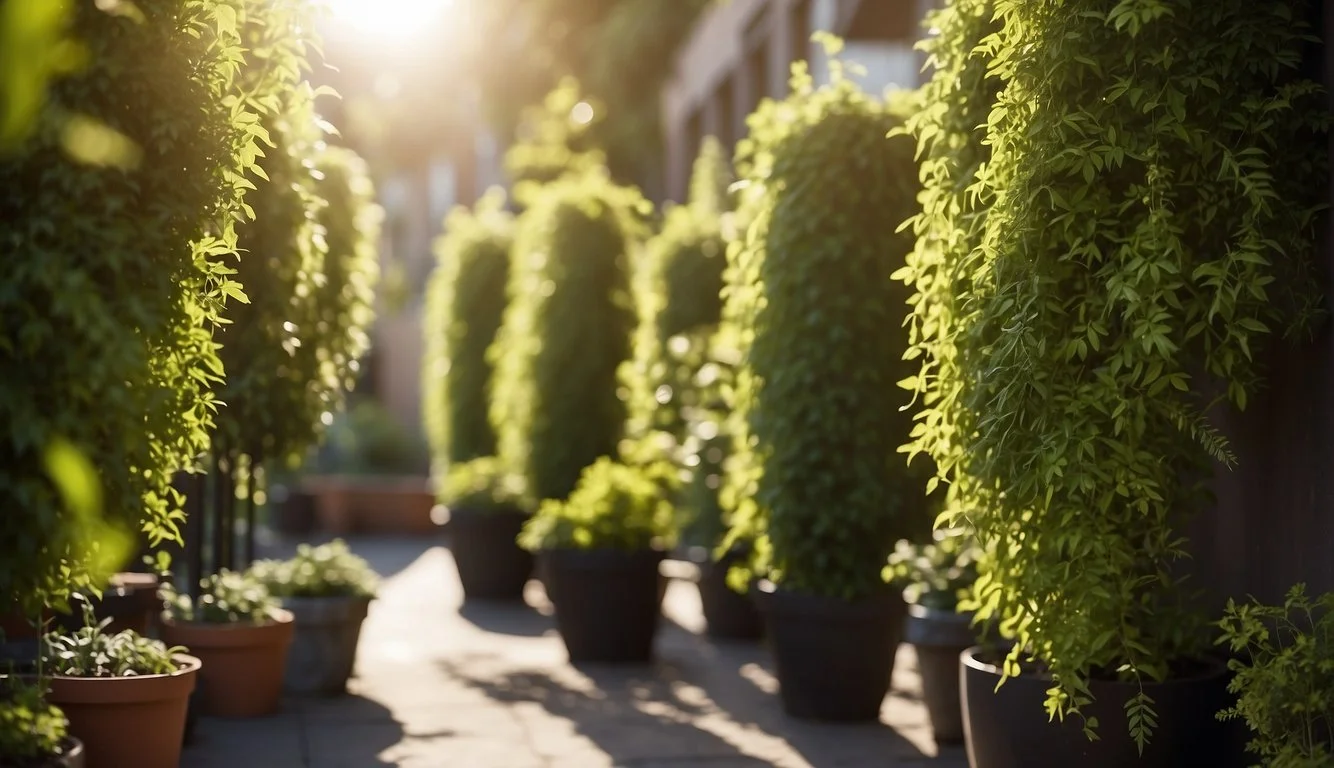
Planning Your Vertical Garden is the first step in ensuring that your garden stays healthy. When choosing the location for your garden, make sure it gets enough sunlight and is protected from strong winds. It’s also important to choose the right plants for your garden. Some plants require more space and sunlight than others, so be sure to research the plants you want to grow before planting them. Once you have a plan in place, it’s time to move on to the next step: choosing the right plants.
Table of Contents
Key Takeaways
- Proper planning and plant selection are essential for maintaining a healthy vertical garden.
- Regular watering and fertilization are crucial for plant growth.
- Proper pruning and pest control can help prevent disease and keep your garden thriving.
Planning Your Vertical Garden
When it comes to planning your vertical garden, there are a few things to consider to ensure its success. First, you need to find the right location for your garden. Since vertical gardens are space-saving, they are perfect for small spaces such as balconies, patios, or even indoor walls.
Once you have found the perfect location, you need to consider the amount of sunlight it receives. Most plants require at least six hours of direct sunlight per day, so make sure your chosen location receives enough sunlight. If your location doesn’t receive enough sunlight, you can consider using grow lights to supplement the natural light.
Next, you need to consider the water and soil requirements of your plants. Since vertical gardens are often grown in containers, the soil needs to be well-draining to prevent waterlogging. You can use a high-quality potting mix or create your own mix by combining compost, vermiculite, and perlite.
In terms of watering, it’s best to water your plants at the base rather than over the top of the leaves. This helps to prevent fungus and disease issues, and also conserves water. You can also consider using a drip irrigation system or self-watering containers to make watering easier.
Finally, you need to consider the vertical gardening system you will use. There are many different systems available, from simple trellises to more complex hydroponic systems. Choose a system that suits your needs and budget, and make sure it’s installed securely to prevent any accidents.
By considering these factors when planning your vertical garden, you can ensure that it thrives and provides you with fresh produce or beautiful greenery all year round.
Choosing the Right Plants
When it comes to vertical gardening, selecting the right plants is crucial for success. Not all plants are suitable for growing vertically, so it’s important to choose the right ones that can thrive in this environment.
There are many types of plants that can be grown in a vertical garden, including flowers, vegetables, herbs, and succulents. Some popular choices for vertical gardens include tomatoes, strawberries, lettuce, and herbs like basil, mint, and parsley. These plants are all well-suited for growing vertically, and they can provide a bountiful harvest with proper care and maintenance.
When choosing plants for your vertical garden, consider the amount of sunlight and space you have available. Some plants require full sun, while others can thrive in partial shade. It’s important to choose plants that are well-suited to the amount of light your vertical garden receives.
In addition to sunlight, you should also consider the amount of space each plant requires. Some plants, like tomatoes and cucumbers, can grow quite large and may not be suitable for smaller vertical gardens. On the other hand, smaller plants like herbs and strawberries can thrive in smaller spaces and are ideal for vertical gardening.
Finally, consider the maintenance requirements of each plant. Some plants require more water and fertilizer than others, and some may be more prone to pests and diseases. It’s important to choose plants that are well-suited to your gardening skills and experience level, so you can provide the care and maintenance they need to thrive.
In summary, choosing the right plants is essential for success in vertical gardening. Consider the amount of sunlight and space you have available, as well as the maintenance requirements of each plant. With proper selection and care, you can create a beautiful and bountiful vertical garden that will provide fresh produce and herbs for your home.
Design and Installation
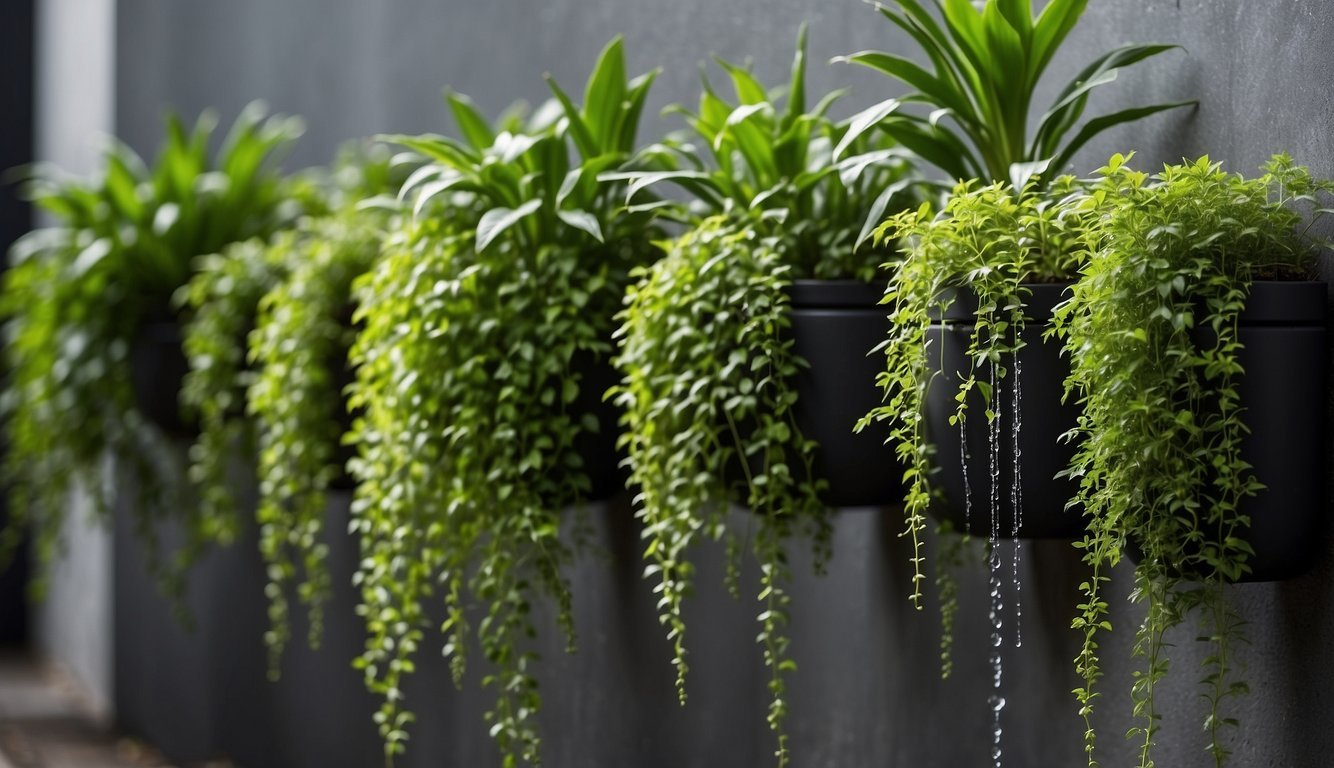
When it comes to designing and installing a vertical garden, there are a few key factors to consider. First, you’ll need to choose the right structure for your space. This could be a trellis, living wall, or other vertical structure. Consider the size and shape of your space, as well as the specific needs of your plants.
If you’re looking for DIY vertical garden ideas, there are plenty of options to choose from. You could create a living wall using a series of planters or pallets, or build a trellis to support climbing plants. Whatever approach you choose, make sure to take into account the weight of your plants and the materials you’re using.
When designing your vertical garden, it’s important to think about the overall aesthetic you’re trying to achieve. Consider the colors, textures, and shapes of your plants, as well as the materials you’re using for your structure. You may want to incorporate different types of plants to create a more dynamic and visually interesting display.
One of the most important design tips for a vertical garden is to plan for proper drainage and irrigation. You’ll need to make sure that your plants are getting enough water without becoming waterlogged. This could involve installing a drip irrigation system or using a watering can to carefully water your plants.
Overall, designing and installing a vertical garden requires careful planning and attention to detail. By choosing the right structure, incorporating creative design elements, and ensuring proper drainage and irrigation, you can create a beautiful and thriving vertical garden in any space.
Maintenance and Care
Maintaining a vertical garden is crucial to ensure the long-term health of your plants. Incorporating regular maintenance and upkeep tasks into your gardening routine will help maintain a vibrant and thriving vertical garden. Here are some key maintenance practices that we recommend:
Watering
Proper watering is essential for the health of your plants. Water your plants in the morning so the leaves can dry out during the day. This will help to slow down, or even stop the spread of disease. If you must water your garden in the evening, take care to keep water off the leaves. Overwatering can also cause root rot, so be sure to water your plants only when the soil is dry to the touch.
Fertilizing
Fertilizing your plants will help them grow strong and healthy. Use a balanced fertilizer that contains equal amounts of nitrogen, phosphorus, and potassium. Apply the fertilizer according to the instructions on the package, and be careful not to over-fertilize, as this can damage your plants.
Pruning
Pruning your plants is important to keep them looking their best and to promote healthy growth. Remove any dead or damaged leaves, stems, or flowers as soon as you notice them. Prune your plants regularly to control their size and shape, and to promote leaf regeneration.
Pest and Disease Control
Pests and diseases can quickly spread throughout your vertical garden, so it’s important to keep an eye out for any signs of trouble. Inspect your plants regularly for pests such as aphids, spider mites, and whiteflies. If you notice any signs of disease, such as yellowing leaves or spots on the leaves, take action immediately to prevent the spread of the disease.
Irrigation and Drainage
Proper irrigation and drainage are essential for the health of your plants. Ensure that your vertical garden has adequate drainage to prevent water from pooling at the bottom of the planter. Use a drip irrigation system to water your plants evenly and efficiently. Check the irrigation system regularly to ensure that it is working properly and that all of your plants are getting the water they need.
By following these maintenance and care tips, you can ensure that your vertical garden remains healthy and vibrant for years to come.
Conclusion
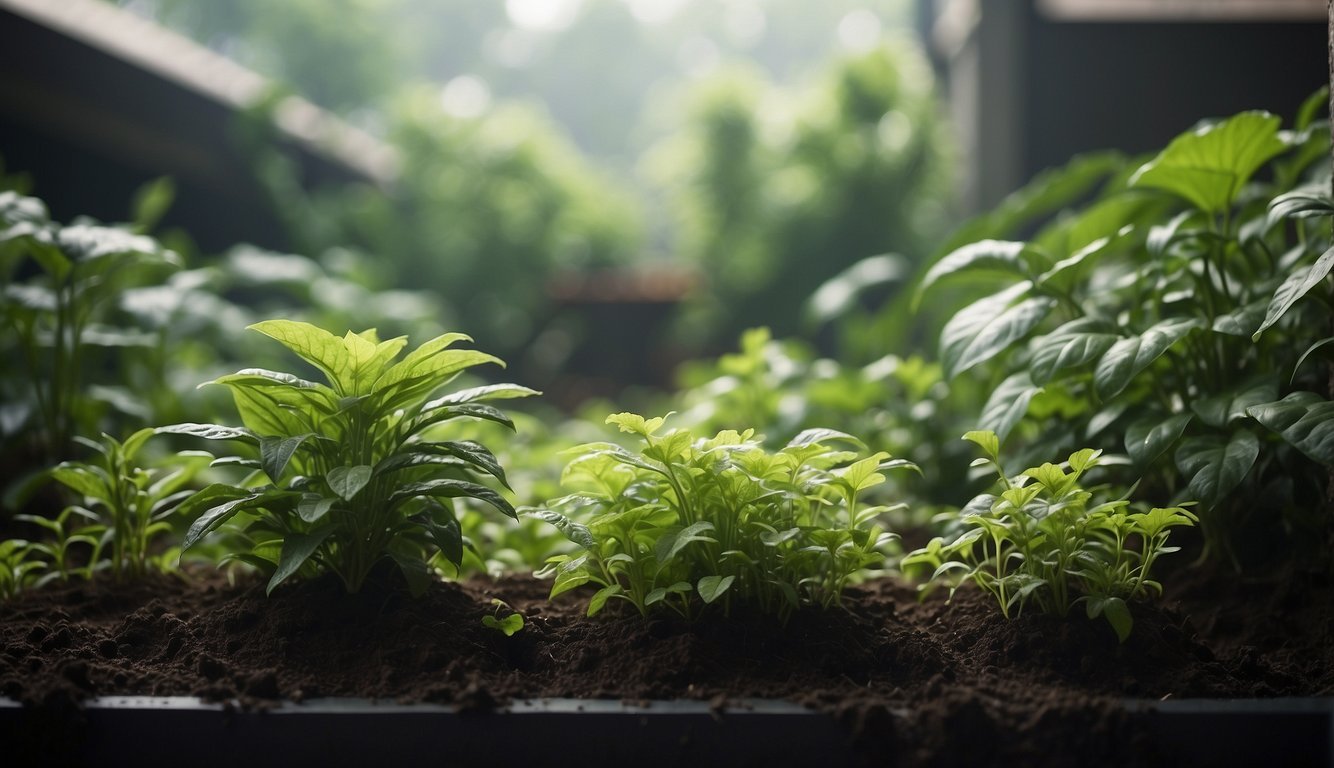
Maintaining a vertical garden is a rewarding experience that can bring a lot of benefits to our lives. With proper upkeep, we can ensure that our garden stays lush and green, providing us with aesthetic and practical benefits. The visual appeal of a well-maintained vertical garden can improve the overall look of our living space and create a relaxing atmosphere.
In addition to the aesthetic benefits, vertical gardens can also improve air quality and provide mental health benefits. Studies have shown that being around greenery can help reduce stress and improve our well-being. By taking care of our vertical garden, we can create a space that not only looks beautiful but also promotes our mental and physical health.
To ensure that our vertical garden stays healthy and vibrant, we must pay attention to its upkeep. This includes regular watering, pruning, and fertilizing. It is also important to choose the right plants for our garden, taking into account the amount of sunlight and space available. By following these tips, we can create a thriving vertical garden that brings us joy and relaxation.
In conclusion, maintaining a vertical garden is a great way to bring the beauty of nature into our living space. By taking care of our garden, we can enjoy the aesthetic and practical benefits of greenery while also improving our well-being. With a little bit of effort and attention, we can create a lush and vibrant vertical garden that adds value to our lives.
Frequently Asked Questions
What is the ideal watering schedule for a vertical garden?
The ideal watering schedule for a vertical garden varies depending on the plants you are growing and the climate in your area. As a general rule of thumb, it is recommended to water your vertical garden once or twice a day, especially during the summer months when the weather is hot and dry. However, it is important to avoid overwatering, as this can lead to root rot and other plant diseases. To ensure that your plants are getting the right amount of water, it is recommended to install a drip irrigation system with a timer.
What are the best plants to use for a vertical garden?
The best plants to use for a vertical garden are those that are well-suited to growing in small spaces and can thrive in a variety of growing conditions. Some popular options include herbs like basil, thyme, and mint, as well as leafy greens like lettuce, kale, and spinach. You can also grow flowers, succulents, and even small fruit trees in a vertical garden. When selecting plants for your vertical garden, it is important to consider their light and water requirements, as well as their growth habits and potential size.
How can one prevent pests in a vertical garden?
Preventing pests in a vertical garden is essential to ensure the health and vitality of your plants. One effective way to prevent pests is to practice good hygiene by removing any dead or diseased plant material and keeping the area around your vertical garden clean and free of debris. You can also use natural pest control methods like companion planting, which involves planting certain plants together to repel pests, or using organic pest control products like neem oil or insecticidal soap.
What are the common signs of nutrient deficiency in vertical gardens?
The common signs of nutrient deficiency in vertical gardens include yellowing or browning of leaves, stunted growth, and poor fruit or flower development. Nutrient deficiencies can be caused by a variety of factors, including poor soil quality, improper fertilization, and overwatering. To prevent nutrient deficiencies, it is important to use high-quality soil and fertilizers, and to monitor your plants regularly for signs of stress or disease.
How should one manage soil erosion in vertical gardens?
Soil erosion can be a problem in vertical gardens, especially if you are growing plants on a slope or in an area with heavy rainfall. To manage soil erosion, it is important to use erosion-control measures like retaining walls, terracing, or mulching. You can also plant ground cover plants like creeping thyme or sedum to help stabilize the soil and prevent erosion.
What are effective methods for insulating vertical gardens in colder climates?
In colder climates, it is important to insulate your vertical garden to protect your plants from frost and freezing temperatures. Some effective methods for insulating vertical gardens include using frost blankets or row covers, wrapping your plants in burlap or other insulating materials, and using heat lamps or other heating devices to keep your plants warm. It is also important to choose cold-hardy plants that can withstand the colder temperatures and shorter growing season.

